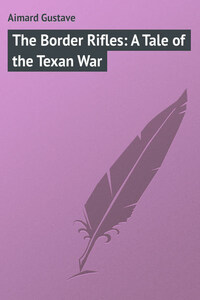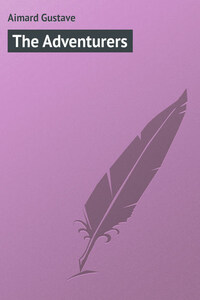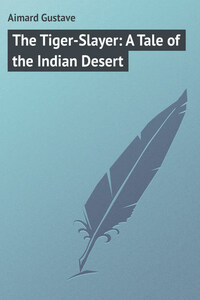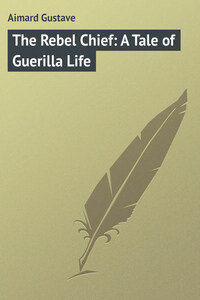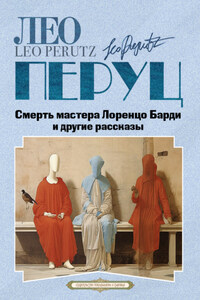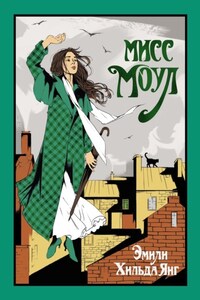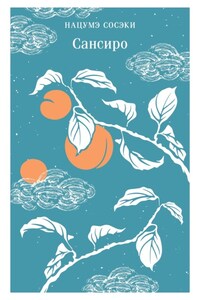CHAPTER I
AN EXCHANGE OF SHOTS
The country extending between the Sierra de San Saba and the Rio Puerco, or Dirty River, is one of the most mournful and melancholy regions imaginable.
This accursed savannah, on which bleach unrecognized skeletons, which the wind and sun strive to convert into dust, is an immense desert, broadcast with grey rocks, beneath which snakes and wild beasts have, from time immemorial, formed their lurking-place, and which only produces black shrubs and stunted larches that rise from distance to distance above the desert.
White or Indian travellers rarely and most unwillingly venture to cross this frightful solitude, and at the risk of lengthening their journey they prefer making a detour and following the border, where they are certain of finding shade and water – those delights of tropical countries and indispensable necessities for a long trip on the western prairies.
Towards the second half of June – which the Navajo Indians call the "strawberry moon" in their harmonious language – and in the Year of Grace 1843, a horseman suddenly emerged from a thick clump of oaks, sumachs, and mahogany trees, entered the savannah at a gallop, and, instead of following the usual travellers' track, which was distinctly traced on the edge of the sand, he began without any hesitation crossing the desert in a straight line.
This resolution was a mark of great folly, or a proof of extraordinary daring on the part of a solitary man, however brave he might be; or else some imperious reasons compelled him to lay aside all prudence in order to reach his journey's end more speedily.
However, whatever the motives that might determine the traveller, he continued his journey rapidly, and buried himself deeper and deeper in the desert, without seeming to notice the gloomy and desolate aspect the landscape around him constantly assumed.
As this person is destined to play an important part in our story, we will draw his portrait in a few words. He was a man of from twenty-five to thirty years of age – belonging to the pure Mexican race, of average height, and possessed of elegant manners; while his every gesture, graceful though it was, revealed a far from ordinary strength. His face, with its regular features and bright hue, evidenced frankness, bravery, and kindliness; his black eyes, haughty and well open, had a straight and penetrating glance; his well cut mouth, adorned with dazzling white teeth, was half concealed beneath a long brown moustache; his chin, of too marked an outline perhaps, denoted a great firmness of character; in short, his whole appearance aroused interest and attracted sympathy.
As for his dress, it was the Mexico costume in all its picturesque richness. His broad-brimmed Vicuna skin hat, decorated with a double gold and silver golilla, was carelessly set on his right ear, and allowed curls of luxurious black hair to fall in disorder on his shoulders. He wore a jacket of green velvet, magnificently embroidered with gold, under which could be seen a worked linen shirt. An Indian handkerchief was fastened round his neck by a diamond ring. His calzoneras, also of green velvet, held round his hips by a red silk gold-fringed faja were embroidered and slashed like a jacket, while two rows of pearl-set gold buttons ran along the opening that extends from the boot to the knee. His vaquero boots, embroidered with pretty designs in red thread, were fastened to his legs by silk and gold garters, from one of which emerged the admirably carved hilt of a long knife. His zarapé, of Indian fabric and showy colours, was folded on the back of his horse, an animal full of fire, with fine legs, small head, and flashing eye. It was a true prairie mustang; and its master had decorated it with the coquettish elegance peculiar to Mexican horsemen.
In addition to the knife we referred to, and which the horseman wore in his right boot, he had also a long American rifle laid across his saddle-bow, two six-shot revolvers in his girdle, a machete, or species of straight sabre, which was passed, unsheathed, through an iron ring on his left side; and, lastly, a reata of plaited leather, rolled up and fastened to the saddle.
Thus armed, the man we have just described was able – on the admission that his determined appearance was not deceitful – to make head against several adversaries at once, without any serious disadvantage. This was a consideration not at all to be despised in a country where a traveller ever runs the risk of encountering an enemy, whether man or beast, and, at times both together.
While galloping, the horseman carelessly smoked a husk cigarette, only taking an absent and disdainful glance at the coveys of birds that rose on his approach, or the herds of deer and packs of foxes which fled in terror on hearing the horse's gallop.
The savannah, however, was already beginning to assume a more gloomy tinge; the sun, now level with the ground, only appeared on the horizon as a red unheated ball, and night was soon about to cover the earth with its dense gloom. The horseman drew up the bridle of his steed to check its speed, though not entirely stopping it, and, casting an investigating glance around him, seemed to be seeking a suitable spot for his night halt.

